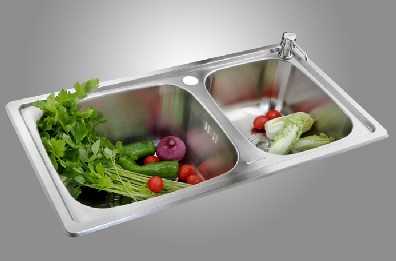Nowadays, many products in the market are designed into stainless steel materials. True stainless steel materials cannot be identified by the naked eye. The real stainless steel materials can be identified in the following four ways:

1. Magnetic test Magnetic test is the simplest method to distinguish between annealed austenitic stainless steel and ferritic stainless steel. Austenitic stainless steels are non-magnetic steels, but will have mild magnetic properties after cold working under high pressure; pure chrome and low alloy steels are ferromagnetic steels.
2. Nitrate Point Test A significant feature of stainless steel tubes is their inherent corrosion resistance to concentrated nitric acid and dilute nitric acid. This property makes it easy to distinguish from most other metals or alloys. However, high-carbon 420 and 440 steels are slightly corrosive when tested with nitric acid, and non-ferrous metals are immediately corroded when they encounter concentrated nitric acid. Dilute nitric acid has a strong corrosive effect on carbon steel.
3, copper sulfate point test Copper sulfate point test is a quick distinction between ordinary carbon steel and all types of stainless steel, the most convenient method. The concentration of the copper sulfate solution used is 5 to 10%. Before conducting the point test, the test area should be thoroughly cleaned of grease or various impurities, and a small area polished with a soft cloth, and then drop the bottle of copper sulfate solution to the cleaned area. Ordinary carbon steel or iron will form a layer of surface metal copper in a few seconds, while the surface of stainless steel will not produce copper precipitation or show the color of copper.
4, sulfuric acid test Sulfuric acid impregnated stainless steel pipe test can distinguish between 302 and 304 and 316 and 317. The cut edge of the sample should be fine ground and then cleaned and passivated for half an hour in nitric acid (specific gravity 1.42) at a volume concentration of 20 to 30% and a temperature of 60 to 66C. The volume concentration of the sulfuric acid test solution was 10%, heated to 71°C. When 302 and 304 steels were immersed in this hot solution, they were rapidly corroded and produced a large amount of bubbles, and the samples turned black within a few minutes; while the 316 and 317 steels The sample is not corroded or the reaction is slow (no bubbles are generated) and the sample does not change color within 10 to 15 minutes. If an approximate comparison is made by testing samples with known compositions at the same time, the test can be made more accurate.
Purchase of materials notice building materials catty stainless steel
Concealed Shower,Wall Mounted Shower,Concealed Shower Mixer,Concealed Rainfall Shower
Heshan Jasupi Sanitary Ware , https://www.jasupifaucets.com